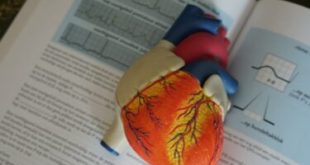Article by Dr. Swathi Shivakumar, Consultant – Dermatologist, Aster RV Hospital
Leprosy is a long-term infectious illness caused by Mycobacterium leprae. It most commonly affects the skin and peripheral nerves, although it can present in a variety of ways. The illness has a long incubation time, usually 5-7 years, and is classed as paucibacillary or multibacillary based on the amount of bacteria present. Leprosy is one of the most common causes of long-term physical impairment. The most efficient means of preventing leprosy handicap is to diagnose and treat cases as soon as possible, before nerve damage occurs. When a patient develops skin patches or signs of peripheral nerve damage, such as tingling, numbness, or loss of sensation over their patches or in their hands and feet, the condition is suspected, and can be confirmed by tests like slit skin smear, skin biopsy or nerve biopsy.
Leprosy is one of the world’s oldest illnesses. Despite breakthroughs in all fields of medical research, leprosy remains a public health issue in India. The National Leprosy Eradication Programme (NLEP) is a government-funded health effort run by the Ministry of Health and Family Welfare in India. As a result of their efforts, India’s national prevalence fell from 57.8 per 10,000 in 1983 to less than 1/10,000 in December 2005, and even lower to 0.66 per 10,000 in 2016.
India continues to account for 60% of new cases reported internationally each year and is one of the 22 “global priority nations” that generate 95% of global leprosy numbers, necessitating a continued effort to reduce the numbers. NLEP proposed a three-pronged approach to address these issues: (a) a “leprosy case detection campaign (LCDC)” in high-endemic districts; (b) a focused leprosy awareness campaign involving ASHA and multipurpose health workers in “Hot Spots” where new cases with Grade 2 Disability (G2D) are detected; and (c) area-specific case detection plans in difficult-to-reach areas.
The government is still dealing with leprosy, which was declared eradicated in 2005. Those who are affected by the condition continue to be stigmatized and discriminated against. The stigma attached to leprosy is so strong that persons affected with the disease are typically excluded from mainstream society. They are denied schooling and jobs, and they frequently lose the right to marry the person of their choice. The stigma and prejudice extend to the family as well; some families reject the afflicted individual out of fear of marginalization. People affected with infectious diseases face discrimination before the law. These laws violate the human rights of those who suffer from these diseases. These discriminatory laws intrude on the affected people’s human rights, such as the right to vote, the right to marry and have a family, and the right to freedom of movement.
Few of the symptoms of leprosy are skin sores or lesions that may not heal after several months, disfiguring skin lumps, skin numbness and muscle weakness caused by nerve injury under the skin. The danger of contracting leprosy is quite low, but you may lower your chances by avoiding contact with bodily fluids and lesions of persons who have it. Antibiotics are used to treat leprosy. Although antibiotics can eliminate all M. leprae germs in your body, they cannot repair nerve damage or abnormalities caused by leprosy. If left untreated, this might result in irreversible nerve damage in the fingers, toes, hands, and feet. Muscle weakening, abnormalities, and even the loss of fingers and toes can result from repeated traumas and nerve injury.
The following factors contribute to the prevention of new leprosy cases: increased BCG vaccination coverage among infants in endemic areas, secondary prevention through contact tracing, early diagnosis, and treatment of infection, chemoprophylaxis for healthy household contacts, and additional BCG vaccination of leprosy patients (though this may speed up the onset of paucibacillary leprosy).
 Newspatrolling.com News cum Content Syndication Portal Online
Newspatrolling.com News cum Content Syndication Portal Online






